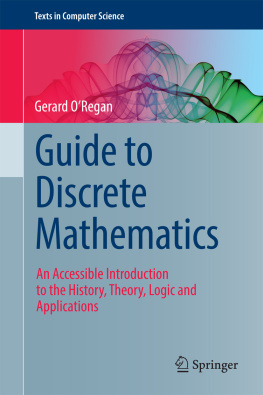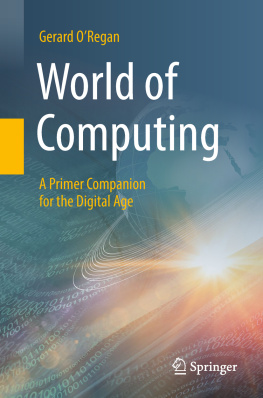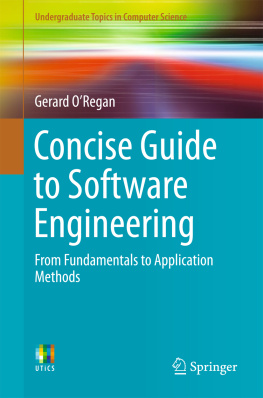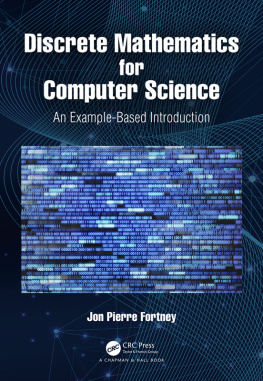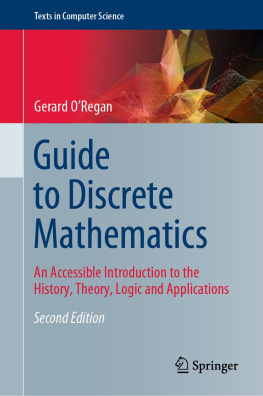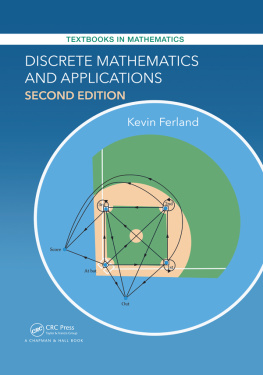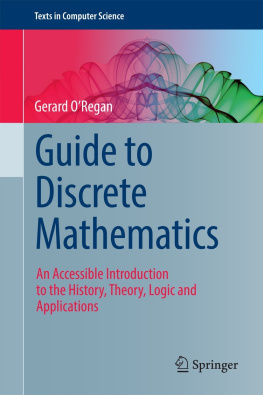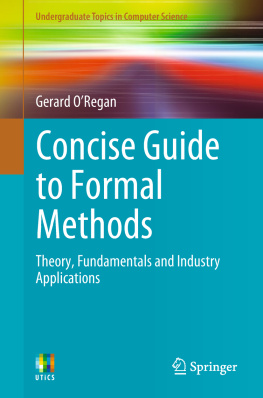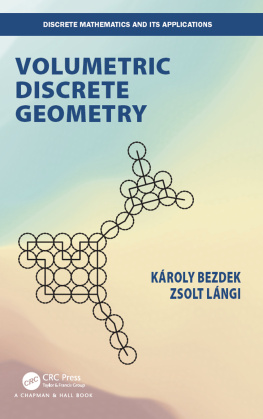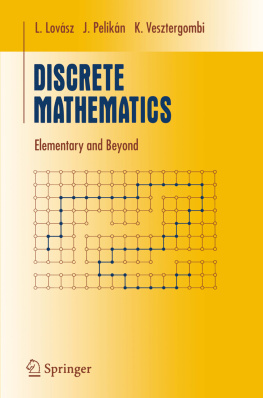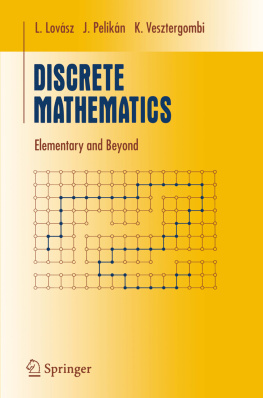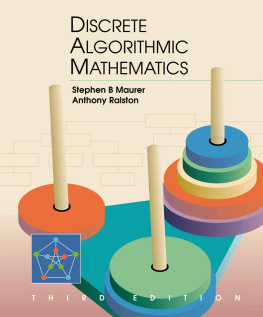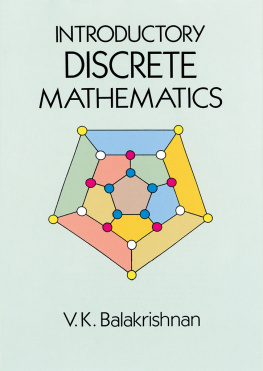1.1 Introduction
It is difficult to think of western society today without modern technology. The last decades of the twentieth century have witnessed a proliferation of high-tech computers, mobile phones, text messaging, the Internet and the World Wide Web. Software is now pervasive, and it is an integral part of automobiles, airplanes, televisions and mobile communication. The pace of change as a result of all this new technology has been extraordinary. Today consumers may book flights over the World Wide Web as well as keep in contact with the family members in any part of the world via e-mail or mobile phone. In previous generations, communication often involved writing letters that took months to reach the recipient.
Communication improved with the telegrams and the telephone in the late nineteenth century. Communication today is instantaneous with text messaging, mobile phones and e-mail, and the new generation probably views the world of their parents and grandparents as being old fashioned.
The new technologies have led to major benefits to society and to improvements in the standard of living for many citizens in the western world. It has also reduced the necessity for humans to perform some of the more tedious or dangerous manual tasks, as computers may now automate many of these. The increase in productivity due to the more advanced computerized technologies has allowed humans, at least in theory, the freedom to engage in more creative and rewarding tasks.
Early societies had a limited vocabulary for counting: e.g. one, two, three, many is associated with some primitive societies, and indicates primitive computation and scientific ability. It suggests that there was no need for more sophisticated arithmetic in the primitive culture as the problems dealt with were elementary. These early societies would typically have employed their fingers for counting, and as humans have five fingers on each hand and five toes on each foot then the obvious bases would have been 5, 10 and 20. Traces of the earlier use of the base 20 system are still apparent in modern languages such as English and French. This includes phrases such as three score in English and quatre vingt in French.
The decimal system (base 10) is used today in western society, but the base 60 was common in computation circa 1500 B.C. One example of the use of base 60 today is the subdivision of hours into 60 min, and the subdivision of minutes into 60 s. The base 60 system (i.e. the sexagesimal system) is inherited from the Babylonians []. The Babylonians were able to represent arbitrarily large numbers or fractions with just two symbols. The binary (base 2) and hexadecimal (base 16) systems play a key role in computing (as the machine instructions that computers understand are in binary code).
The achievements of some of these ancient societies were spectacular. The archaeological remains of ancient Egypt such as the pyramids at Giza and the temples of Karnak and Abu Simbel are impressive. These monuments provide an indication of the engineering sophistication of the ancient Egyptian civilization. The objects found in the tomb of Tutankhamun are now displayed in the Egyptian museum in Cairo, and demonstrate the artistic skill of the Egyptians.
The Greeks made major contributions to western civilization including contributions to Mathematics, Philosophy, Logic, Drama, Architecture, Biology and Democracy. that are housed today in the British Museum, London.
The Hellenistic period commenced with Alexander the Great and led to the spread of Greek culture throughout most of the known world. The city of Alexandria became a centre of learning and knowledge during the Hellenistic period. Its scholars included Euclid who provided a systematic foundation for geometry. His work is known as The Elements, and consists of 13 books. The early books are concerned with the construction of geometric figures, number theory and solid geometry.
There are many words of Greek origin that are part of the English language. These include words such as psychology that is derived from two Greek words: psyche () and logos (). The Greek word psyche means mind or soul, and the word logos means an account or discourse. Other examples are anthropology derived from anthropos () and logos ().
The Romans were influenced by Greeks culture. The Romans built aqueducts, viaducts, and amphitheatres. They also developed the Julian calendar, formulated laws ( lex ); and maintained peace throughout the Roman Empire ( pax Romano ). The ruins of Pompeii and Herculaneum demonstrate their engineering capability. Their numbering system is still employed in clocks and for page numbering in documents. However, it is cumbersome for serious computation. The collapse of the Roman Empire in Western Europe led to a decline in knowledge and learning in Europe. However, the eastern part of the Roman Empire continued at Constantinople until it was sacked by the Ottomans in 1453.
1.2 The Babylonians
The Babylonian]. These included tables for multiplication, division, squares, cubes and square roots and the measurement of area and length. Their calculations allowed the solution of a linear equation and one root of a quadratic equation to be determined. The late Babylonian period (c. 300 B.C.) includes work on astronomy.
They recorded their mathematics on soft clay using a wedge shaped instrument to form impressions of the cuneiform numbers. The clay tablets were then baked in an oven or by the heat of the sun. They employed just two symbols (1 and 10) to represent numbers, and these symbols were then combined to form all other numbers. They employed a positional number system and used the base 60 system. The symbol representing 1 could also (depending on the context) represent 60, 602, 603, etc. It could also mean 1/60, 1/3600, and so on. There was no zero employed in the system and there was no decimal point (no sexagesimal point), and therefore the context was essential.

The example above illustrates the cuneiform notation and represents the number 60 + 10 + 1 = 71. The Babylonians used the base 60 system, and this base is still in use today in the division of hours into minutes and the division of minutes into seconds. One possible explanation for the use of the base 60 notation is the ease of dividing 60 into parts. It is divisible by 2,3,4,5,6,10,12,15,20 and 30. They were able to represent large and small numbers and had no difficulty in working with fractions (in base 60) and in multiplying fractions. The Babylonians maintained tables of reciprocals (i.e. 1/ n , n = 1, 59) apart from numbers like 7, 11, etc., which cannot be written as a finite sexagesimal expansion (i.e. 7, 11, etc., are not of the form 2 3 5 ).
The modern sexagesimal notation [] 1;24,51,10 represents the number 1 + 24/60 + 51/3600 + 10/216,000 = 1 + 0.4 + 0.0141666 + 0.0000462 = 1.4142129. This is the Babylonian representation of the square root of 2. They performed multiplication as follows: e.g. consider 20 * sqrt(2) = (20) * (1;24,51,10)


